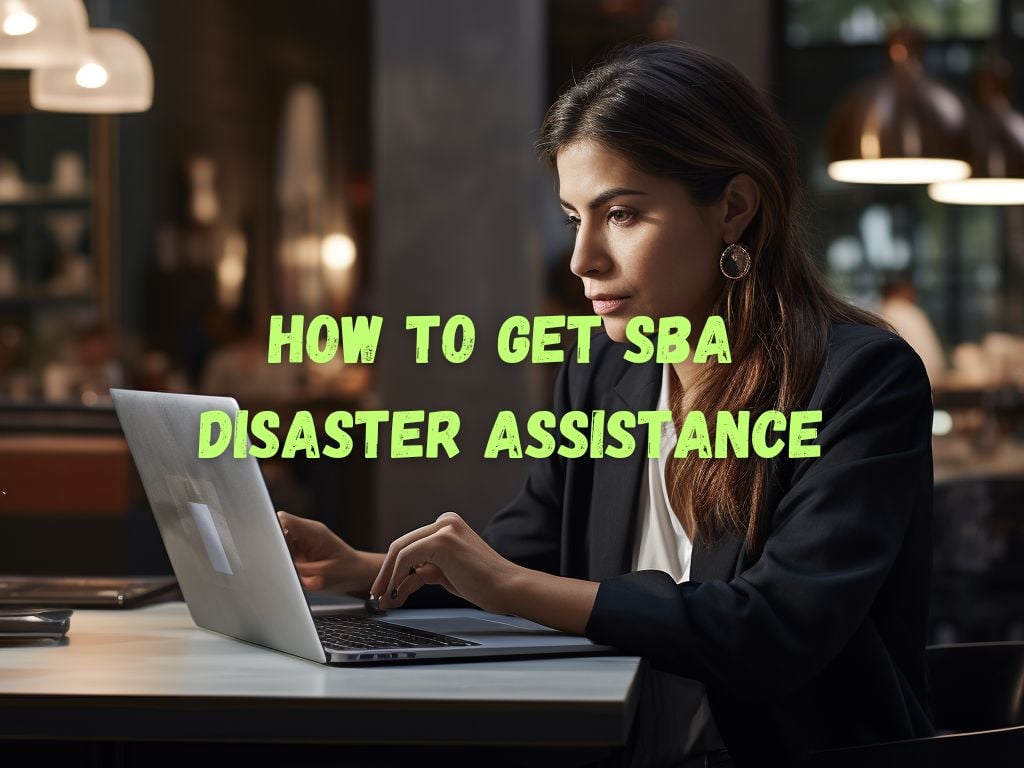When disasters strike, small businesses often bear a significant brunt of the impact.
The Small Business Administration (SBA) is committed to providing assistance through its SBA Disaster Assistance program.
In this guide, we will explore the process involved in accessing SBA disaster assistance, including eligibility criteria, types of assistance available, application procedures, FAQs, and pro tips to increase your chances of success.
What is SBA Disaster Assistance?
SBA Disaster Assistance is a vital program offered by the Small Business Administration (SBA) to help small businesses recover from the impact of disasters.
Whether it is physical damage caused by a natural disaster or economic harm resulting from a declared emergency, the SBA provides financial assistance in the form of low-interest loans, grants, and other support programs.
Understanding the Purpose of SBA Disaster Assistance
The primary objective of the SBA Disaster Assistance program is to help small businesses overcome the challenges imposed by disasters and emergencies.
By providing financial support, the program aims to aid businesses in rebuilding and resuming their operations as quickly as possible.
This assistance not only helps individual businesses but also contributes to the overall economic recovery of affected communities.

The Importance of SBA Disaster Assistance for Small Businesses
Small businesses play a crucial role in the economy, and their survival is vital for local communities.
Unfortunately, disasters can have a catastrophic impact on small businesses, leading to closures and job losses.
SBA Disaster Assistance serves as a lifeline for these businesses, offering them the opportunity to regain their financial stability and continue contributing to the local economy.
The program provides access to affordable loans, grants, and resources that may otherwise not be readily available to small businesses during times of crisis.
How SBA Disaster Assistance Differs from traditional loans
One key distinction between SBA Disaster Assistance and traditional loans is the focus on disaster-related needs.
SBA loans for disaster assistance often have lower interest rates and longer repayment terms than traditional loans.
Additionally, the SBA may provide grants and other forms of financial support that are not typically available through traditional lenders.
These unique features make SBA Disaster Assistance a preferred choice for small businesses seeking assistance after a disaster.
Collaboration between SBA and FEMA
The SBA works closely with the Federal Emergency Management Agency (FEMA) to streamline the assistance process for disaster-affected businesses.
While FEMA primarily focuses on providing immediate relief and emergency services, the SBA focuses on long-term recovery and financial assistance.
The collaboration between the two agencies ensures a coordinated response to disasters and helps businesses access the resources they need efficiently.
Eligibility Criteria for SBA Disaster Assistance
To be eligible for SBA disaster assistance, your business must meet certain criteria. First, it must be a small business, typically defined based on industry standards or specific location considerations.
Verifying your small business status is crucial before proceeding with the application.
Furthermore, certain industries or locations may have additional requirements or exclusions that you need to be aware of.
Types of SBA Disaster Assistance
Low-Interest Loans
The SBA offers two main types of low-interest loans for disaster-stricken businesses:
Physical Disaster Loans
Physical Disaster Loans are designed to help businesses recover from physical damage caused by a disaster.
These loans can be used to repair or replace damaged property, machinery, equipment, inventory, and even to provide working capital.
The loan amount, terms, eligible expenses, and required documentation will vary based on your specific situation.
Economic Injury Disaster Loans
Economic Injury Disaster Loans provide financial relief to businesses that have suffered substantial economic injury due to a disaster.
These loans can help cover operating expenses, payroll, and other financial obligations that may arise during the recovery period.
The loan amount, terms, eligible expenses, and documentation will differ depending on your circumstances.
Grants and Other Forms of Assistance
In addition to low-interest loans, the SBA provides certain grants and other supplemental programs to support businesses affected by disasters.
One such grant is the Emergency Economic Injury Grant, which provides an immediate grant of up to $10,000 to eligible businesses to cover immediate needs. Other programs may be available based on the specific disaster or region.

How to Get SBA Disaster Assistance: The Application Process
Preparing for the Application Process
Before starting the application, ensure you have all the necessary documentation readily available.
This may include financial statements, tax returns, business licenses, insurance information, and any other relevant records.
Familiarize yourself with the online application platform to streamline the process.
Applying for SBA Disaster Assistance
Follow these steps to complete the application process:
- Start by creating an account on the SBA Disaster Assistance website.
- Provide accurate and complete information about your business, the extent of the damage or economic injury, and your financial situation.
- Lastly, explain how the disaster has affected your business and its ability to operate.
Tips for Completing the Application Accurately and Efficiently
To maximize your chances of approval, ensure you double-check all the information provided before submitting the application.
Keep a record of all the expenses and losses incurred, as providing accurate documentation is crucial. Be prepared to elaborate on any answers or provide additional information if requested.
Following Up on the Application
Once you have submitted the application, it is essential to stay proactive and in touch with the SBA.
Regularly check the status of your application through the online portal or by contacting the SBA’s Disaster Assistance Customer Service Center.
If additional information or documentation is requested, respond promptly to avoid delays in processing.
Frequently Asked Questions
Who is eligible for SBA Disaster Assistance?
The SBA Disaster Assistance program is available to small businesses that have experienced damage or economic harm due to a declared disaster.
What types of businesses are eligible for SBA Disaster Assistance?
Small businesses, including sole proprietorships, partnerships, limited liability companies (LLCs), and corporations, may be eligible for SBA Disaster Assistance.
How much funding can I receive through SBA Disaster Assistance?
The loan or grant amount available varies depending on several factors, including the extent of the damage, the impact on the business, and the specific program applied for.
Can I apply for multiple types of assistance?
Yes, you can apply for both Physical Disaster Loans and Economic Injury Disaster Loans if your business has suffered both physical damage and economic harm.

Pro Tips for a Successful SBA Disaster Assistance Application
Successfully navigating the application process for SBA Disaster Assistance is crucial to receiving the support your business requires.
Here are some pro tips to increase your chances of success:
Begin the Application Process as Soon as Possible
Time is often of the essence when applying for SBA Disaster Assistance. It is essential to initiate the application process promptly to take advantage of the available resources and maximize your chances of receiving financial assistance.
Delays in applying may result in missed opportunities and potential setbacks for your business’s recovery.
Document Eligible Expenses and Losses Thoroughly
Accurately documenting all eligible expenses and losses is key to a successful application. Keep detailed records of any physical damage to your property, equipment, inventory, or other assets.
If applying for economic injury assistance, maintain comprehensive financial records that clearly show the negative impact on your business.
Having well-organized and verifiable documentation will strengthen your case and help expedite the application process.
Provide Accurate and Complete Information
When completing the application, ensure all information provided is accurate, up-to-date, and complete.
Double-check your responses and supporting documentation to minimize errors or discrepancies. Inaccurate or incomplete information may lead to delays or unnecessary requests for further documentation, potentially slowing down the approval process.
Communicate Promptly and Effectively
Maintaining open lines of communication with the SBA during the application process is crucial. Promptly respond to any requests for additional information or documentation to avoid unnecessary delays.
Stay proactive by regularly checking the status of your application through the online portal or by contacting the SBA’s Disaster Assistance Customer Service Center.
Being responsive and engaged demonstrates your commitment and increases your chances of a successful application.
Conclusion
Accessing SBA Disaster Assistance can provide much-needed financial relief for businesses impacted by disasters.
By adhering to the eligibility criteria, understanding the types of assistance available, meticulously completing the application process, and following up on the application, you can maximize your chances of receiving the support your business needs to recover and thrive.
Remember, the sooner you take action, the sooner you can receive the assistance you require. Get started today and let the SBA help you navigate the road to recovery.


 Tags:
Tags:










